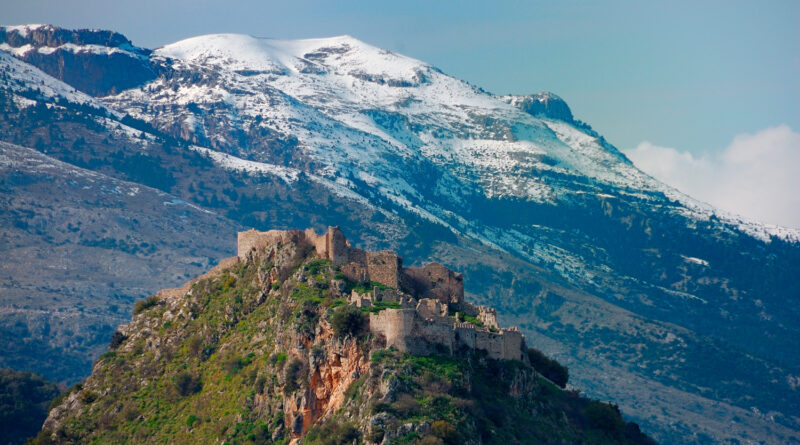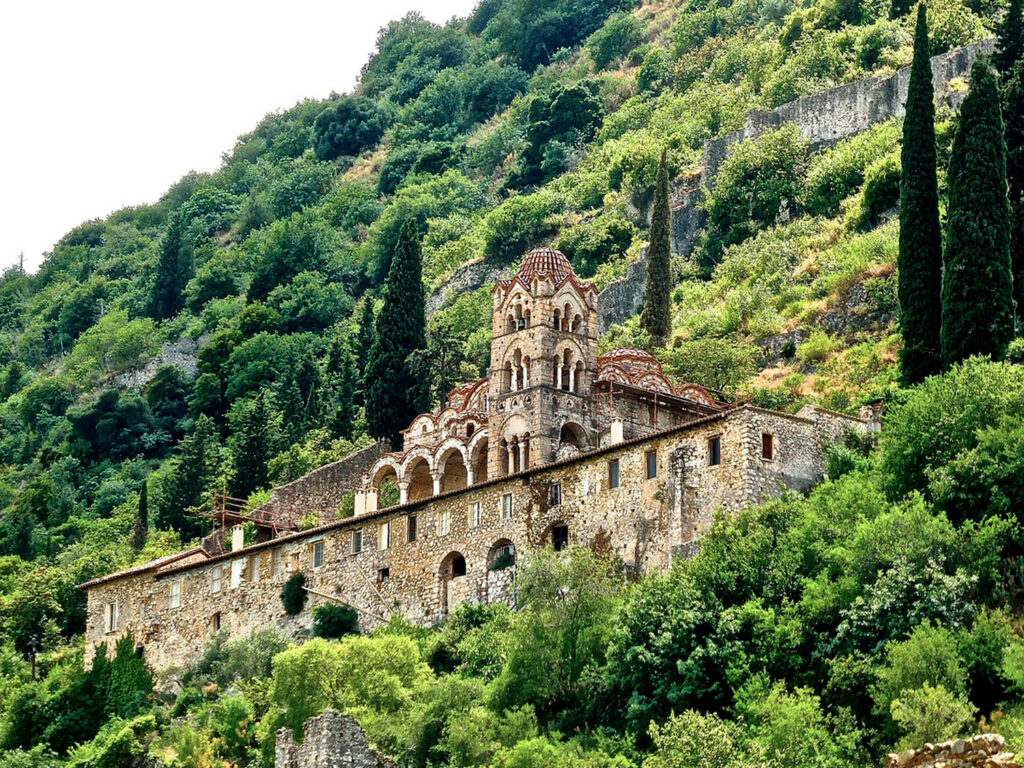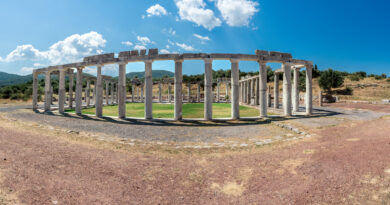Mystras Greece – a Byzantine Fortress Town and World Heritage Site
7 kilometres west of Sparta you will find Mystras, a World Heritage-listed site with captivating ruins of churches, libraries, strongholds, and palaces in a fortress town.
Mystras is one of the most significant historical sites in Peloponnese peninsula. This is the last cultural stronghold of the Byzantine Empire before the invasion of the Ottoman army, about 1000 years after the foundation of Mystras.
Mystras – the “Wonder of the Morea”
Mystras, also called the ‘Wonder of the Morea’, was built as an amphitheatre around the fortress – palace erected in 1249 by Prince William of Villehardouin. Reconquered by the Byzantines (1261), then occupied by the Turks (1460) and the Venetians (1687-1715), the city was abandoned in 1832 after the Greek War of Independence, leaving only the medieval ruins, standing in a beautiful landscape. The complex of the ruins of Mystras offers the image of a city with a great history that was deserted by men and threatened by the return of encroaching vegetation, which is splitting the walls and covering the slopes, and in this natural way destroying or covering fragile traces of history.

Where is Mystras Fortress?

Mystras is a fortified town in Laconia, Peloponnese. Since the 2011 local government reform it is part of the municipality Sparti, of which it is a municipal unit. Situated on Mt. Taygetos, near ancient Sparta, it served as the capital of the Byzantine Despotate of the Morea in the 14th and 15th centuries, experiencing a period of prosperity and cultural flowering. The site remained inhabited throughout the Ottoman Period, when it was mistaken by Western travellers for ancient Sparta. In the 1830s, it was abandoned and the new town of Sparti was built, approximately eight kilometres to the east.
History of Mystras
In 1249, Mystras became the seat of the Latin Principality of Achaea, established in 1205 after the conquest of Constantinople during the Fourth Crusade, and Prince William II Villehardouin, a grand-nephew of the Fourth Crusade historian Geoffrey of Villehardouin, built a palace there.
In 1261, the Latins ceded Mystras and other forts in the southeastern Peloponnese as ransom for William II, who had been captured in Pelagonia, and Michael VIII Palaeologus made the city the seat of the new Despotate of the Morea. It remained the capital of the despotate, ruled by relatives of the Byzantine emperor, although the Venetians still controlled the coast and the islands. Mystras and the rest of Morea became relatively prosperous after 1261, compared to the rest of the empire. Under the despot Theodore it became the second most important city in the empire after Constantinople, and William II’s palace became the second residence of the emperors.
The frescos in the Peribleptos Church, dating between 1348 and 1380, are a very rare surviving late Byzantine cycle, crucial for the understanding of Byzantine art.

Mystras – the last centre of Byzantine scholarship
Mystras was also the last centre of Byzantine scholarship; the Neoplatonist philosopher George Gemistos Plethon lived there until his death in 1452. He and other scholars based in Mystras influenced the Italian Renaissance, especially after he accompanied the emperor John VIII Palaiologos to Florence in 1439.
Mystras and the Ottoman rule
The last Byzantine emperor, Constantine XI Palaiologos, was despot at Mystras before he came to the throne. Demetrius Palaeologus the last despot of Morea, surrendered the city to the Ottoman emperor Mehmed II in 1460. The Venetians occupied it from 1687 to 1715, but otherwise the Ottomans held it until 1821 and the beginning of the Greek War of Independence. It was abandoned by King Otto for the newly rebuilt Sparti. In 1989 the ruins, including the fortress, palace, churches, and monasteries, were named a UNESCO World Heritage Site.
The churches of Mystras

The beauty of the churches of Mystras, which during the Renaissance of Paleologus had been covered with dramatic frescoes, the renown of the libraries of Mystras and the glory of its writers (including Georges Gemiste Plethon and Jean Bessarion who brought neo-Platonic humanism to Italy) gave substance thereafter for the legend of the ‘Wonder of Morea.’
Mystras during the Renaissance
During the Renaissance Mystras never recovered its past grandeur, although it still numbered some 40,000 inhabitants. The silk industry was the manufacturing and trading city’s only resource. Then Mystras was burned by the Albanians during the Magna Revolt in 1770 and was in a condition of decadence when it was definitively abandoned in 1832.
In 1989 the ruins, including the fortress, palace, churches, and monasteries, were named a UNESCO World Heritage Site.











